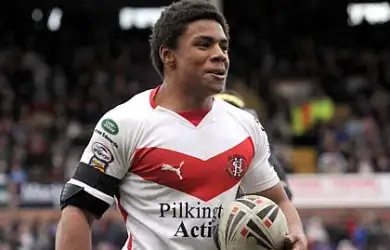A two way street

During the past seven days rugby league has had significantly more national media coverage than we have been accustomed to.
Unfortunately, the vast majority of this coverage has centred on the decision of Kyle Eastmond to switch codes and join Bath.
While Eastmond and his advisers deservedly attracted criticism for their handling of the situation, many in the rugby league community have also expressed concerns about the direction in which the game is heading.
Coaches, supporters and even Super League players have questioned whether more players will be tempted to change codes and called for changes in the way our game rewards and promotes its stars.
The natural athleticism of our players and the huge impact made by Chris Ashton since he left Wigan for Northampton will inevitably lead to more rugby union clubs casting their eyes in our direction.
Eastmond is an outstanding athlete and, although some doubt whether he will be suited to rugby union, Bath’s coaching staff clearly believe he has what it takes to succeed.
But should rugby league just accept that talent will be heading in one direction?
It would be foolish to ignore the fact that our sport is unable to match the rewards and exposure available in rugby union. There are clearly issues that need to be addressed and the RFL has to find a solution that ensures our sport is able retain its best talent.
Many rugby league fans will recall the influx of rugby union players that took place during the early to mid 1990s.
A number of players including Alan Tait, Scott Gibbs and Scott Quinnell made successful transitions and some, like Jonathan Davies and Va’aiga Tuigamala had an even greater impact.
It is unlikely household names in rugby union can be tempted to switch codes at present, however there are a host of younger players who have the potential to succeed in rugby league.
Ask me to sit and watch a game of rugby union and my response will be less than welcoming but I can fully appreciate the technical skills and physical attributes required to play the game.
I firmly believe that the quality of coaching in rugby league is of a sufficiently high standard to ensure that players switching codes can have a genuine impact.
I admit that I am no rugby union expert but former Great Britain coach Brian Noble is another who believes our game can benefit from targeting players in other codes. He brought Gareth Thomas to the Crusaders last year and made no secret of his desire to sign Wales forward Andy Powell too.
After a few early jitters Thomas has proven to be more than capable of holding his own as a rugby league player. If a player of his advancing years can show that level of improvement in less than 12 months then I am sure a 20 or 21-year-old switching codes can do likewise.
Another player to have made the switch in recent seasons is Rory Kettlewell, the teenage half back who joined Leeds Rhinos this winter.
Kettlewell, a product of the Gloucester rugby union club, was spotted by scouts from Wigan Warriors and openly admits that he enjoys the extra freedom to be found in rugby league.
There will be many more like Thomas and Kettlewell currently plying their trade at rugby union clubs and I for one hope a few of them are encouraged to try and prove they can cut it in rugby league too.
I wonder if they’ll be afforded the same level of coverage as Kyle Eastmond?